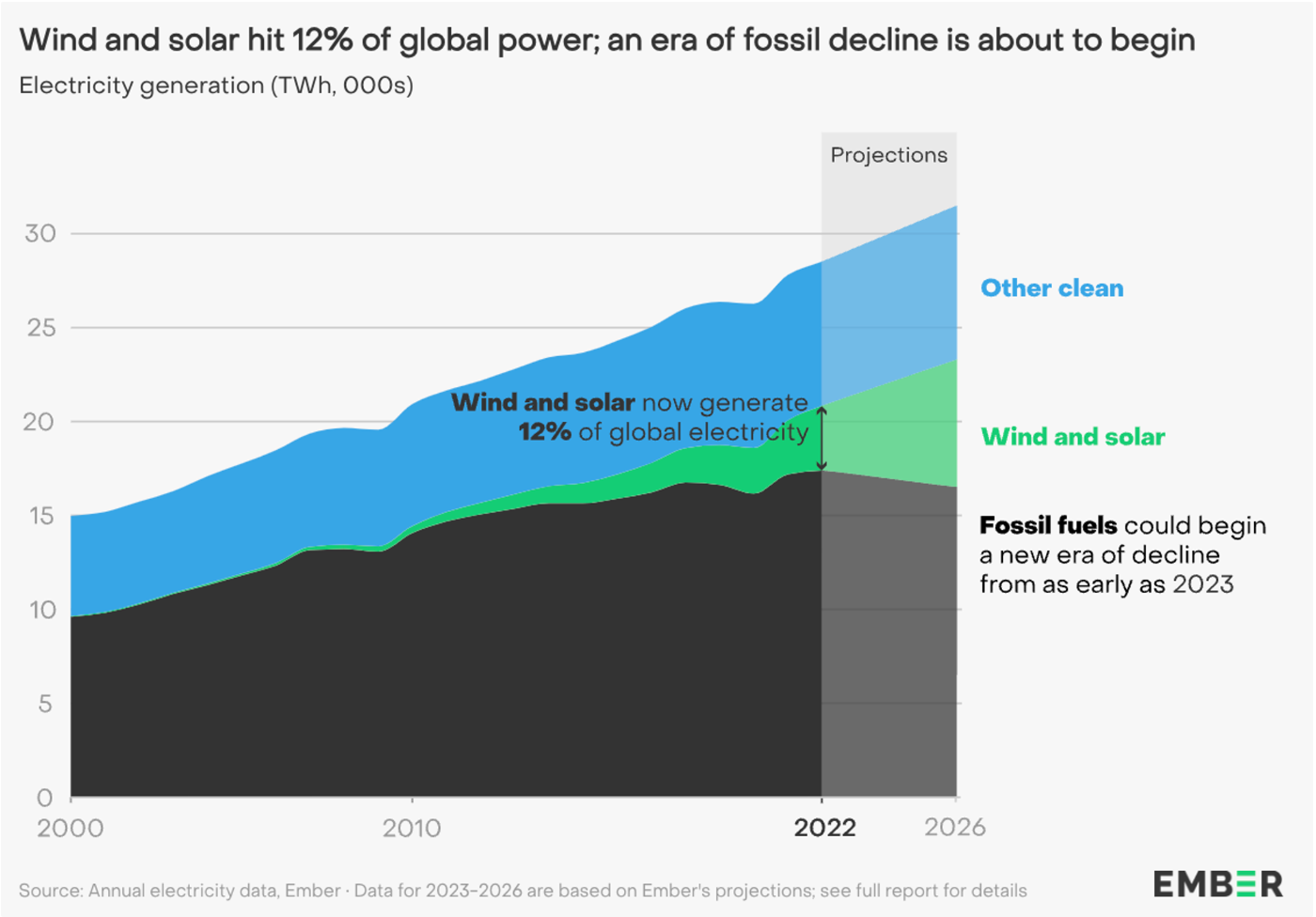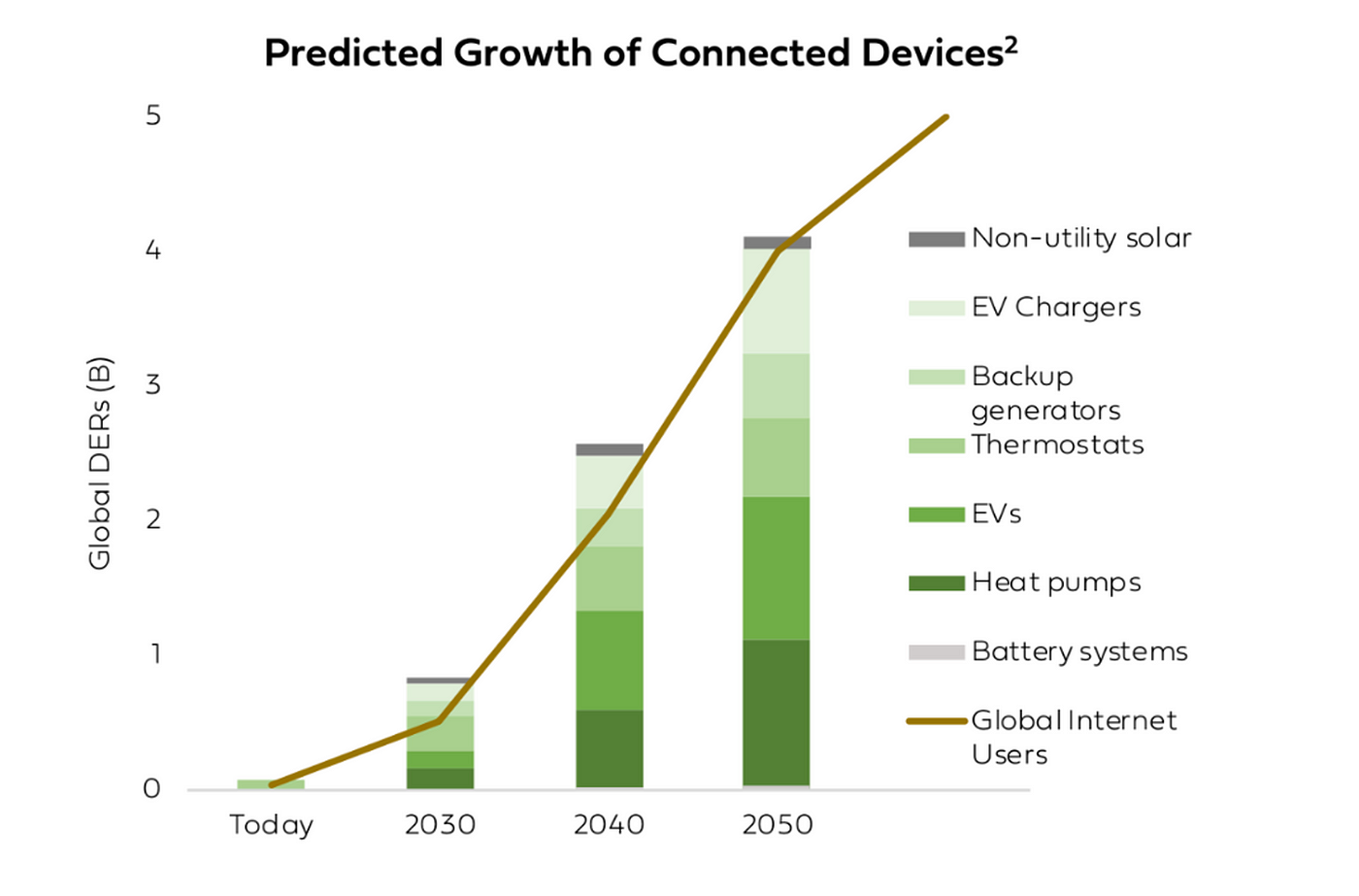

If we wanted to point towards the single catalyst responsible for the civilisation we live within now, that would be energy. Progress in history can really be boiled down to step-changes in energy generation, due to shifts from less to more efficient energy sources, yielding exponentially more progress — in the form of quality of life, economic growth, population size, tech innovation … you name it. Humankind’s affair with energy sources started with nothing more than human muscle until we domesticated the first animals, whose kinetic energy peaked to make up about 90% of mechanical energy sources until the 1500s. However, nothing has been as crucial to explaining the advances of our modern civilisation as much as fossil fuels. Their use has increased 1500x over the past 220 years (3500x since 1800) and it’s been key to fulfilling our society’s addiction to economic growth. This is highlighted by the near-perfect correlation between GDP growth and primary energy consumption: between 1970 and 2010 the estimated total global extraction of natural resources grew 3.2x, whilst the world economy (inflation-adjusted) grew 3.4x.
Unfortunately, the very simple equation ‘more energy = more GDP growth’ can’t keep our civilisation growing indefinitely. The current levels of economic consumption aren’t sustainable without fossil carbon and hydrocarbon consumption, yet fossil fuel resources are large but not infinite, and their extraction costs are largely on the rise — not to mention the now well-documented adverse impacts on our planet. N. J. Hagens puts it best: ‘The 20th century experienced increasing energy quality and decreasing energy prices. The 21st century will be a story of decreasing energy quality and increasing energy cost’.
Here’s a no-news: accessing cheap unlimited energy whilst preserving the planet has been mostly technologically de-risked and it’s on the verge of becoming a core layer of our energy generation. Using modern technology to harness renewable energy dates back to the end of the 19th century, and specifically to two gentlemen both named Charles. In 1883, Charles Fritts invented the first solar cell and, swiftly after, Charles Brush developed the first practical wind turbine. By the mid-20th century the first commercial solar and wind projects went live but it wasn’t until the early 2000s that these technologies began to become mainstream, thanks to government subsidies, substantial cost reductions and a full-blown oil crisis.
We have now, finally, reached an inflection point from a hardware perspective. Since the 1950s, the LCOE (Levelised Cost of Energy) for solar has gone from $1 to below $0.05/kWh and from $0.30 to $0.03/kWh for onshore wind — enabling wind and solar to generate 12% of global power in 2022 and forecasts expect wind and solar to meet 41% of global demand by 2040.

Source: Ember
Dropping hardware costs haven’t been limited to the generation side, though. Electric vehicles, heat pumps, thermostats, HVAC systems, small-scale batteries and PV panels are becoming more and more prevalent in households across the planet, this is also driven by drastic reductions in price coupled with stronger sustainability sentiment at a consumer level, government regulations and financial incentives. The residential DER (Distributed Energy Resources) market is poised to almost 4x from 2023 to 2032 as our households become ever more connected and dependent on electricity. While the electrification of our homes and workplaces is a net positive for the planet, the forecasted 3x increase in energy demand (in the US) alone potentially requires an even larger increase in energy supply — which comes with a price tag in the high $Tn in infrastructure costs.

Source: Equal Ventures
For the first time in history, the entry window for energy customers is finally opening up. The sour, yet long-standing relationship customers have had with a single energy provider has never been more fragile. The rise of electricity prices, driven both by the macro-economical environment and general electrification, is pushing customers to question their energy supplier relationship. At the same time, DER penetration in the home is opening up spaces for new service providers — from installations to maintenance and flexibility. It is not hard to believe that a customer in the future could have multiple electricity-related service provider relationships, and this creates an array of opportunities for new players in the energy tech space.
We are on the cusp of achieving an infrastructure-level change to our energy systems that could single-handedly lower the cost of energy, increase the amount of energy, preserve our planet and enable the next generation of society-wide innovation. Yet, there is a huge disconnect between the potential of these new technologies and our current systems setup. We have officially entered the personal computing era of energy — we have affordable and mainstream hardware but what is missing is an Internet-like connective tissue that enhances the opportunities of these new hardware and lowers their risks. Hidden amongst the many challenges and complexities of the energy sector, there is a once-in-a-century opportunity for brave enough founders to build the changing infrastructure of the most critical system for our civilisation's progress and survival.
We see opportunities for value creation in three main areas within the ever-evolving energy space:
The existing system connecting our energy supply to its demand isn’t fit for future-proof purposes. It needs to undergo its third structural revolution since 1882, when Edison Pearl Street Station, the first commercial power station of its kind, opened doors in the heart of NYC.
The first era of energy grids was the Wild West — the 40 years after Edison Pearl Street Station saw the number of power companies grow 70x in a truly disjointed fashion. Companies would build a power generation plant, connect to customers and sell electricity to their customers. Any equipment failure meant customers had no other choice than to wait for blackouts to be over. With energy becoming more of a necessity for functioning societies, this called for top-down centralisation of energy grids. This started in the UK in 1926 with the National Grid, merging local electrical networks in a nationwide synchronous AC grid running on 50 Hz lines. Network effects worked wonders — more customers meant smoother demand and higher load factors for the production of power plants. Countries across the globe swiftly moved towards building centralised electric grids governed by TSOs (Transmission System Operators), tasked with coordinating power producers to meet demand and keep frequency constant over time. The grid will keep evolving in a true centralised manner, leveraging economies of scale to meet relatively predictable demand even throughout the liberalisation of electricity markets from starting in Chile in the 1980s.
Our grid, however, is facing its biggest existential challenge yet. On one hand, the penetration of weather-dependent renewable generation mixed with large-scale battery storage is shifting generation from being predictable, steady, and quick to turn on and off to being intermittent and less easy to control. On the other hand, the forecasted 3x increase in electricity consumption at a domestic level, combined with the widespread rise of DERs is poised to put another strain on our 19th century grids. Add to this mix the growth in large-scale battery storage, the first non-energy generating grid player, with prices decreasing from above $1k/kWh of storage capacity in 2010 to $150/kWh in 2019 and are projected to be $75/kWh by 2024, and no wonder energy volatility dwarfs Bitcoin volatility.